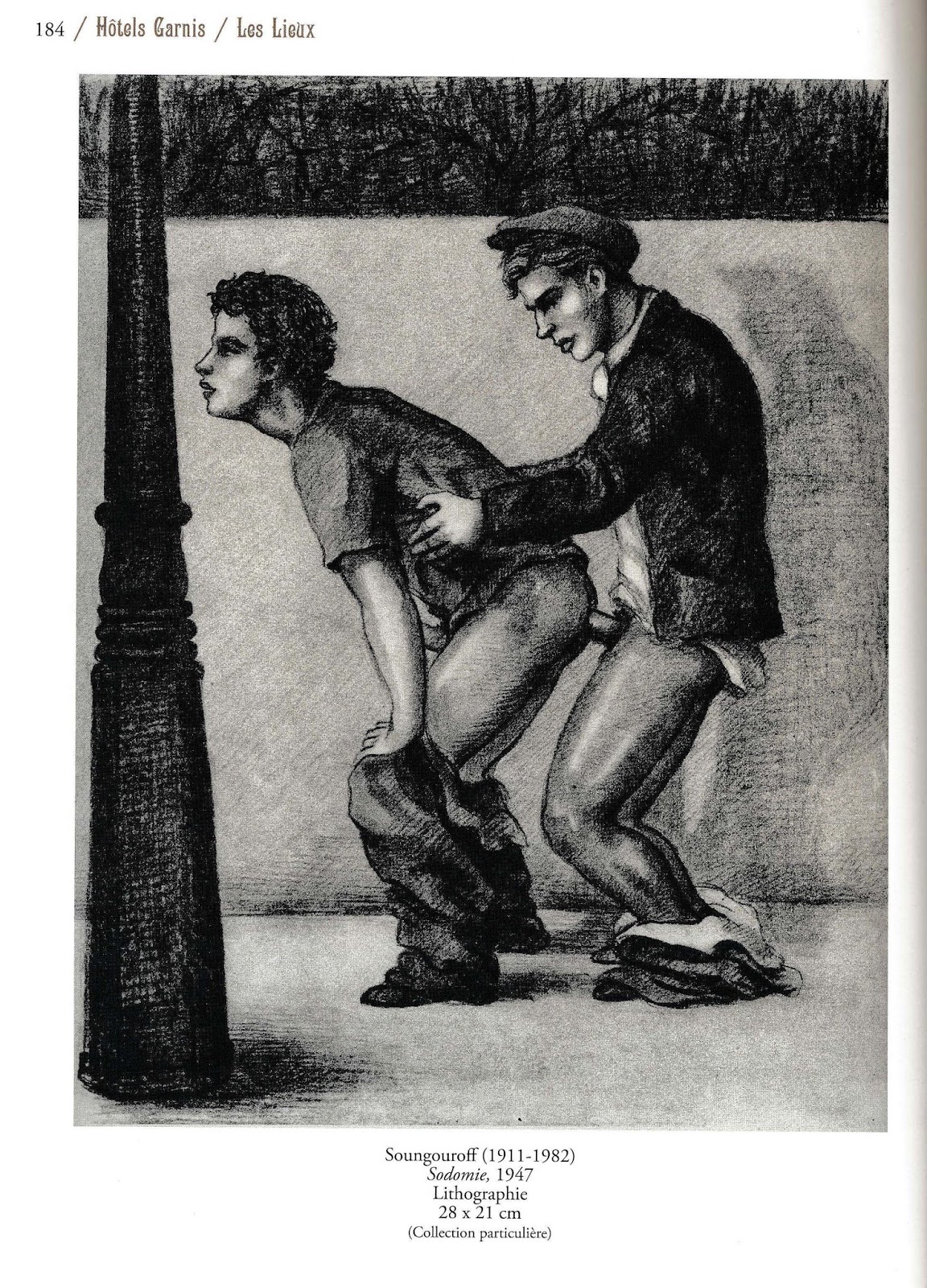Project Description
This Dancerie is a multi-event, multi-site, multi-media work that explores the ways in which gay men have created public expressions of desire despite mainstream prohibitions of manifestations of those aspects of their lives in the context of Paris as a complex historical cultural arena for this exploration.
The pretext of This Dancerie is urbanization as a prerequisite for homosexual subculture and the understanding that despite the absence of “gay ghettos, ” gay men developed and carried on forbidden lives in public it cities around the world. This Dancerie focuses on Paris as a cross-road of queer life in which, although, technically, homosexuality was legal since 1791, decency was legislated and under surveillance.
This Dancerie will create a series of foci on Paris as a site of refuge for queer men and the environments they historically frequented. Particular attention will be placed on developing narratives that include a range of differing intersections of class, race, creeds, ethnicities and gender the collaborators will develop a movement based-work for male groupings drawing upon culturally specific traditions. The role immigration plays in these narratives will also be underscored.
This Dancerie is a multi-event, multimedia collaborative work under the artistic direction of Tony Whitfield. This project will be a collaboration between Whitfield, as Executive Producer and Artistic Director, Thierry Micouin as Director of Choreography, media artist Klaus Fruchtnis as Technical Director, fashion designer Patricio Sarmiento, filmmaker Sebastiano d’Ayala Valva and composer/musician Nils Nussen, all from France and composer/ musician Andrew Alden, and filmmakers Joe Lumbroso and Dyana Winkler, from the United States. Eight to ten sites across the City where same sex desire has created a shifting landscape of criminalized activity, class-complicated entanglements, immigrant freedom, forbidden commerce, transgressive beauty and encoded seduction will be the context for short filmed dance/movement based narratives since 1870. Each three to five minute films will begin with a cruising ritual and be filmed in those spaces. For several evenings the films will be presented in situ as projected images activated by passersby movement. Ideally these installations would be debuted as part of Paris’ La Nuit Blanche in 2017.
These films would then be brought together into a single space to produce an additional evening long performance or “dance party” that would be digitally randomized and improvisationally scored for classical ensemble and world pop musicians. Ideally the space would be situated in a cultural center and include a live performance component that involved local gay residents. Various forms of social media will be employed to augment and reveal aspects of the project's narrative content during the culminating dance party and its scatter site installations.
Several aspects of this project should move it beyond the context of performance based works that explore cultural identity and history. They include: the site specific nature of the public installation that will seek to revive unknown queer histories in ways that immerse the audience in the projected work; the creation of apps that will allow the participant to access deeper know of the history behind the narrative they have stumbled into as well as information about the artwork itself and other components of the work at other sites across Paris as well as multifaceted entries into the "dance party."
It is anticipated that audiences for This Dancerie will include: post modern dance, experimental music, expanded cinema, public art and contemporary performing arts audiences. In addition general public members who are attending events associated with Paris' La Nuit Blanche 2017 and local commmunities adjacent to the various sites in which This Danceries' short constituent works will be situated.This project will seek to engage LGBTQI populations including scholars, artists, performers and youth. Social media, print and electronic media associated with La Nuit Blanche and the venue that will host the culminating event will be drawn upon in addition to apps established specifically for This Dancerie.
The primary goal is to reveal the queer past and present of Paris as an urban geography that has been multifaceted, ethnically, economically, and culturally diverse while also revealing those aspects of queer life that defy normalization, concealment behind closed doors challenge notions of "decency" are tied to desire and find expression despite histories of policing and surveillance. In addition this work will seek to engage collaborative, improvisational and interactive structures and technologies to create social points of entry and discussion among various queer communities across Paris and beyond as a means of expanding current discussions about same sex desire.







No comments :
Post a Comment